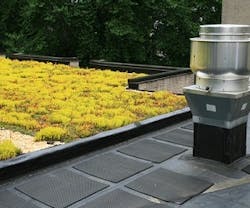EPA Backs Green Infrastructure Strategy
The U.S. Environmental Protection Agency (EPA) is launching a new strategy to promote the use of green infrastructure to reduce stormwater runoff that pollutes streams, creeks, rivers, lakes and coastal waters.
Green infrastructure has been shown to decrease pollution by treating rain where it falls and keeping polluted stormwater from entering sewer systems.
In addition to protecting Americans’ health by decreasing water pollution, green infrastructure provides community benefits including increased economic activity and neighborhood revitalization, job creation, energy savings and increased recreational and green space.
“Through this agenda, we’ll help cities and towns across the nation clean up their waters and strengthen their communities by supporting and expanding green infrastructure,” says Deputy Administrator Bob Perciasepe, who announced the agenda at a Green Street, Green Jobs conference focused on fostering green infrastructure in the Washington, DC metropolitan area. “Green infrastructure changes improve the health of our waters while creating local jobs, saving communities money and making them healthier and more prosperous places to raise a family and start a business.”
Green infrastructure captures and filters pollutants by passing stormwater through soils and retaining it. There are a variety of green infrastructure tools available today, including green roofs, permeable materials, alternative designs for streets and buildings, trees, rain gardens and rain harvesting systems.
The EPA plans to work with local governments, watershed groups, tribes, and more. Green infrastructure initiatives are not just good for the environment, but they also confer significant energy saving benefits.
Green roofs have been shown to reduce a building’s energy costs by 10-15%. Urban tree canopy can provide 5-10% savings from shading and windblocking.
